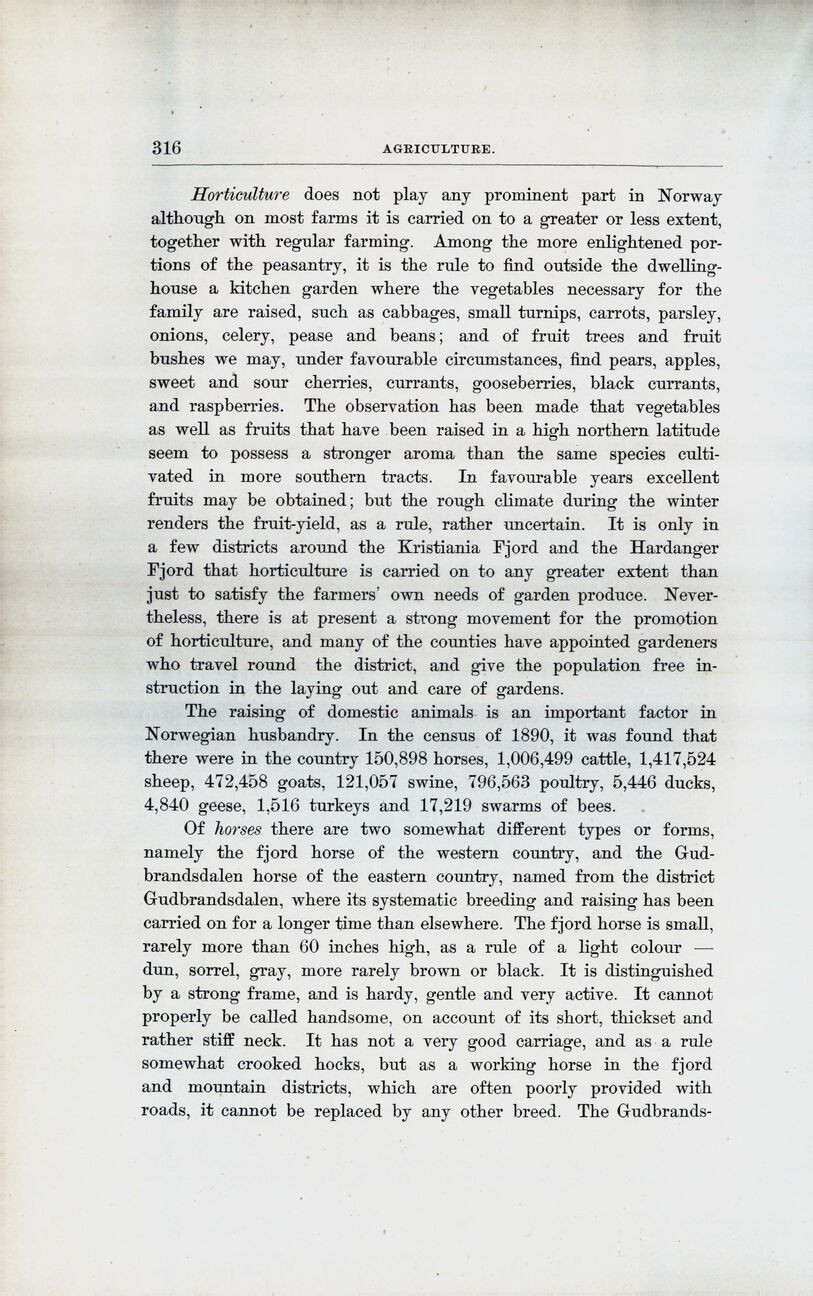
Full resolution (JPEG) - On this page / på denna sida - Agriculture, by G. Tandberg

<< prev. page << föreg. sida << >> nästa sida >> next page >>
Below is the raw OCR text
from the above scanned image.
Do you see an error? Proofread the page now!
Här nedan syns maskintolkade texten från faksimilbilden ovan.
Ser du något fel? Korrekturläs sidan nu!
This page has been proofread at least once.
(diff)
(history)
Denna sida har korrekturlästs minst en gång.
(skillnad)
(historik)
Horticulture does not play any prominent part in Norway
although on most farms it is carried on to a greater or less extent,
together with regular farming. Among the more enlightened
portions of the peasantry, it is the rule to find outside the
dwelling-house [[** sjk bindestrek]] a kitchen garden where the vegetables necessary for the
family are raised, such as cabbages, small turnips, carrots, parsley,
onions, celery, pease and beans; and of fruit trees and fruit
bushes we may, under favourable circumstances, find pears, apples,
sweet and sour cherries, currants, gooseberries, black currants,
and raspberries. The observation has been made that vegetables
as well as fruits that have been raised in a high northern latitude
seem to possess a stronger aroma than the same species
cultivated in more southern tracts. In favourable years excellent
fruits may be obtained; but the rough climate during the winter
renders the fruit-yield, as a rule, rather uncertain. It is only in
a few districts around the Kristiania Fjord and the Hardanger
Fjord that horticulture is carried on to any greater extent than
just to satisfy the farmers’ own needs of garden produce.
Nevertheless, there is at present a strong movement for the promotion
of horticulture, and many of the counties have appointed gardeners
who travel round the district, and give the population free
instruction in the laying out and care of gardens.
The raising of domestic animals is an important factor in
Norwegian husbandry. In the census of 1890, it was found that
there were in the country 150,898 horses, 1,006,499 cattle, 1,417,524
sheep, 472,458 goats, 121,057 swine, 796,563 poultry, 5,446 ducks,
4,840 geese, 1,516 turkeys and 17,219 swarms of bees.
Of horses there are two somewhat different types or forms,
namely the fjord horse of the western country, and the
Gudbrandsdalen horse of the eastern country, named from the district
Gudbrandsdalen, where its systematic breeding and raising has been
carried on for a longer time than elsewhere. The fjord horse is small,
rarely more than 60 inches high, as a rule of a light colour —
dun, sorrel, gray, more rarely brown or black. It is distinguished
by a strong frame, and is hardy, gentle and very active. It cannot
properly be called handsome, on account of its short, thickset and
rather stiff neck. It has not a very good carriage, and as a rule
somewhat crooked hocks, but as a working horse in the fjord
and mountain districts, which are often poorly provided with
roads, it cannot be replaced by any other breed. The
<< prev. page << föreg. sida << >> nästa sida >> next page >>